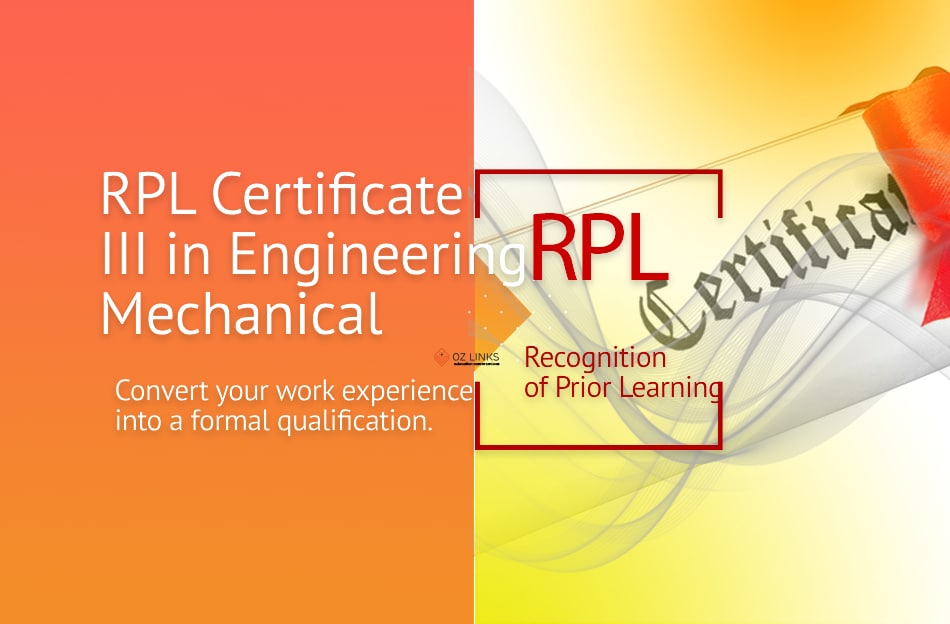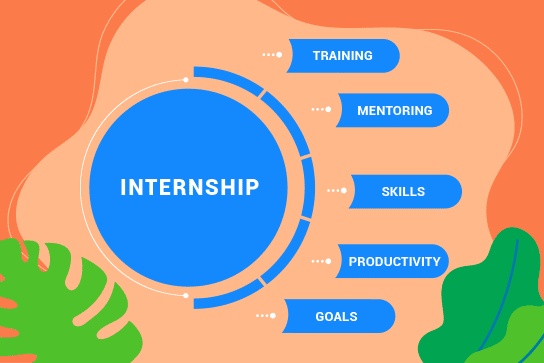Last Updated on October 23, 2025 by Ozlinks Education
If you have been employed as a fitter or metal machinist in the manufacturing industry but have not yet attained your qualification for any reason, you’ve come to the right place. The RPL (Recognition of Prior Learning) program is a way to convert your skills and work experience into a formal Certificate III in Engineering Mechanical Trade from one of our Registered Training Organisation partners.
Let’s get your skills certified!
Certificate III in Engineering Mechanical
The MEM30219 Certificate III in Engineering Mechanical Trade is tailored for individuals aiming to pursue a career in the mechanical engineering sector in Australia. Fitters and metal machinists are responsible for fitting and assembling fabricated metal parts into products, setting up machining tools, production machines, and textile machines, as well as operating machining tools and machines to shape metal stock and castings. It is recommended to consider obtaining this certificate, as it represents one of the essential trade qualifications required for roles as a fitter or metal machinist in the manufacturing and mining industries.
To attain the MEM30219 Certificate III in Engineering Mechanical Trade qualification, you must demonstrate competency in a total of 96 points include:
- 33 points of core units
- 63 points of elective units
Job title:
- Fitter
- Fitter and Turner
- Fitter-Welder
- Metal Machinist
What does a metal machinist do?
A metal machinist fit and assemble fabricated metal parts into products, set up machining tools, production machines and textile machines, and operate machining tools and machines to shape metal stock and castings.
Their job involves:
- Studying drawings and specifications to determine suitable material, method and sequence of operations, and machine settings
- Fitting fabricated metal parts into products and assembling metal parts and subassemblies to produce machines and equipment
- Checking fabricated and assembled metal parts for accuracy, clearance and fit using precision measuring instruments
- Setting guides, stops and other controls on machining tools, setting up prescribed cutting and shaping tools and dies in machines and presses, and setting controls for textile machines
- Forming metal stock and castings to fine tolerances using machining tools to press, cut, grind, plane, bore and drill metal
- Cutting, threading, bending and installing hydraulic and pneumatic pipes and lines
- Preparing pattern mechanisms to control the operation of textile machines used to spin, weave, knit, sew and tuft fabric
- Diagnosing faults and performing operational maintenance of machines, and overhauling and repairing mechanical parts and fluid power equipment
- May erect machines and equipment on-site
What is Recognition of Prior Learning?
The Australian Qualification Framework (AQF), which is governed by the Australian Government’s Department of Education in consultation with the states and territories, gives all students the right to have their prior education, relevant work experience, and training acknowledged to facilitate their advancement towards and between qualifications. Every registered training organisation (RTO) has its own policies and procedures for determining your RPL eligibility, but the fundamentals are the same. The experience and skills you’ve gained through your work can help you complete a qualification faster and reduce the time commitment of taking a course to get you closer to your dream job.
The advantages of using RPL program
Recognition of Prior Learning (RPL) program offer numerous benefits, including time and cost savings by validating existing skills and experience, expedited qualification achievement, and improved employment prospects. RPL program helps you:
- There is no need to relearn what you already know.
- It saves both your time and tuition fees.
- Assist you in achieving your career change objectives in Australia.
- Gaining an Australian qualification requires less time.
- You do not need to attend classes or redo the training you have already completed.
- Open new career opportunities in the building industry.
- Obtain a qualification to satisfy the visa or skills assessment requirements.
Why do I need the Certificate III in Engineering Mechanical?
If you have been working as a fitter or metal machinist in the manufacturing and construction mining industry but have not yet obtained your qualification for any reason, pursuing an RPL program for this certification will greatly enhance your opportunities within the manufacturing and mining sectors. It will also provide you with the essential credentials required to become a qualified technician, thereby boosting your confidence and credibility with both clients and employers.
International students and migrants may need this certificate for their migration skills assessment if they plan to apply for a skilled visa as fitter or metal machinist. This certificate serves as evidence of their qualifications and experience in the field, ensuring they meet the necessary standards established by the relevant assessing authorities.
Ozlinks Education can assist you in transforming your skills and work experience into a formal Certificate III in Engineering Mechanical Trade through the Recognition of Prior Learning (RPL) program with one of our Registered Training Organisation partners. Our expert team will assess your individual circumstances and provide tailored support to ensure that you achieve the qualifications necessary to advance your career.

Evidence requirements
Below is the general list of documents that you are required to provide to support your RPL assessment application:
- 100 points of identification documents (ID)
- A current resume outlines your relevant employment history
- Student USI number
- Employment evidence, including an employment reference letter, employment contract, payslips, income statement, and superannuation.
- Workplace photos and videos that showcase you performing your tasks in accordance with the job duties outlined above demonstrate your competency in the relevant qualification.
Note: Additional gap training may be necessary to address any areas for improvement and to ensure a positive assessment outcome. An RTO assessor might conduct a competency interview with you to identify any existing training gaps.
How does Ozlinks Education help with RPL?
Ozlinks Education can assist you with the Recognition of Prior Learning (RPL) process by acting as your agent. We will guide you through every step, from preparing your application to obtaining a formal qualification. Our services include gathering and preparing required documents; locating a suitable Registered Training Organisation (RTO) partner; and offering tailored support to help you convert your work experience into a recognised certificate.
RTO partnership
As an education agent, we maintain partnerships with various RTOs, enabling you to access a diverse range of RPL programs and select a qualification that aligns with your skills.
Application assistance
We assist you in preparing and submitting your application by guiding you through the process and clarifying the requirements for skill assessment.
Document preparation:
We assist you in preparing your employment portfolio and collecting the essential evidence to showcase your skills and experience.
Tailored support
Our team offers personalised support to maximise your chances of successfully obtaining the qualifications necessary to advance your career.



